Pure jean-ius: Levi’s celebrates 150 years of 501s
Sign up now: Get ST's newsletters delivered to your inbox
Follow topic:
SAN FRANCISCO – The 501 may be the company’s most popular jeans, but it is the constant innovation of Levi Strauss & Co that has maintained its status as a household name.
The 150th anniversary of the classic 501 jeans, named after their lot number for easier identification, also coincides with the brand’s 170th anniversary.
The company was founded in 1853 by German-American businessman Levi Strauss, and was originally a dried goods store that sold, among other things, high-quality denim.
Levi’s historian Tracey Panek says: “In 1872, he got a letter from a tailor named Jacob Davis in Reno, Nevada. He ordered some fabric and told Strauss about the innovative way he strengthened the material for the miners, adding rivets to the pockets. They were selling like hotcakes and Davis couldn’t keep up with the demand, so he invited Levi’s to take out a patent with him.”
The approved patent marked the origins of what is now known as the 501 jeans.
Originally a heavy-duty work pant worn with suspenders, it had a cinch in the back to adjust sizing for different miners. Over time, it became part of mainstream fashion.
The brand is associated with high-quality apparel, and a pair of Levi’s is a fashion staple.
For many, it was also a marker of social status, like it was for the company’s chief executive Charles Bergh, 66, better known as Chip.
In an interview at the Levi’s headquarters in San Francisco, he says: “I was getting ready to go to middle school and all I knew was that the cool kids wore Levi’s. I had to ask my mother to drive me three towns away to get them, and I wore them every single day of seventh grade. I was one of the cool kids.”
As CEO, he is largely responsible for reviving the company to what it is today, after nearly two decades of minimal growth and fighting lawsuits against other fashion lines for stealing the patented back pocket design.
The company’s net revenue was US$4.8 billion in 2011, and it went up to US$6.2 billion (S$8.5 billion) in 2022.
With a background in the military and 28 years at consumer goods giant Procter & Gamble as a “brand guy”, Mr Bergh has experience that was invaluable in the dramatic market turnaround which has helped Levi’s reach those aged 20 to 30. He calls them a “lost generation” of consumers who grew up in the era when Levi’s was not doing too well.
He achieved this through several initiatives.
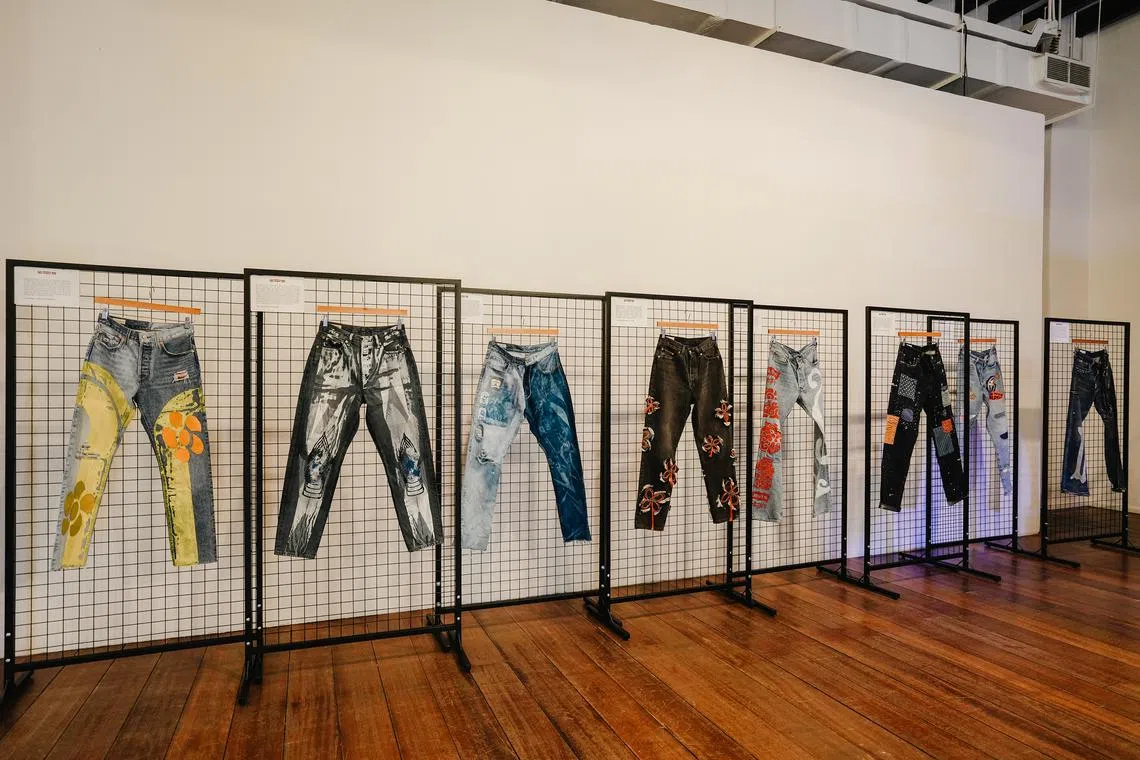
The Levi’s 501 Experience to celebrate the 150th anniversary of its classic 501 jeans was held at performing arts theatre space 72-13.
PHOTO: LEVI’S
One was moving the innovation lab from Turkey to San Francisco in 2013. Production shifted overseas in the 1980s due to financial difficulties and rising competition. The long flights, however, made regular visits inconvenient for the product and design teams.
Now, it sits only blocks away from the Levi’s Plaza in Battery Street.
Mr Bergh says: “It was a signal to the company that innovation is important, and that we’re going to be product-focused, investing in both product and innovation.”

The Eureka Lab was moved to San Francisco to make it easier for designers to test products and try new things.
ST PHOTO: CHARMAINE LIM
The Eureka Lab is now home to a variety of product and design testing, made easier by advanced machinery that allows for same-day prototyping.
Then there is Project Green Screen, which Mr Bergh launched in 2013 to make strides in innovative sustainability.
The project reduced the number of laundry chemicals used from about 300 to around eight. It included removing potassium permanganate, an oxidiser used to bleach the denim. The chemical can severely irritate skin and eyes, and contains manganese, a non-biodegradable heavy metal.
Levi’s has also switched to a waterless dyeing process using aerosol sprays instead of a water bath to reduce contaminated water.

Levi’s makes jeans of all washes, using aerosol sprays to dye the material instead of a water bath.
ST PHOTO: CHARMAINE LIM
Vice-president and head of global design innovation Paul Dillinger says: “The apparel industry, like many other industry systems, is broken. The solution shouldn’t mean the end of culture and happiness. There has to be a way to decarbonise and sustain clean environmental resources and still look good in your favourite pair of jeans.”
Since 2022, the 100 per cent cotton blend of 501s has been updated to be 60 per cent organic cotton and 40 per cent Renewcell fibres, which chemically reconstructs old cotton jeans into a pulp that is remade into a new textile and blended with the cotton.
The remaining polyester details are the red Levi’s tab and pocket tags, which are non-biodegradable. The buttons are made of metal.
Mr Dillinger says: “It isn’t us selling information. Innovation at Levi’s is making sure we don’t give up anything that the consumer would expect. We hold ourselves to the highest standards and values.”
Beyond sustainable clothing, the company has made it its mission to keep not just abreast but also ahead of trends.
One example is the commuter trucker jacket, a collaboration with Google’s Jacquard technology. Conceived for people on the go, it had – within the left sleeve – wires that connected to the wearer’s phone via Bluetooth, controllable through a series of hand motions.
The hand motions also made the jacket helpful for persons with physical accessibility problems. Data collected showed higher use during work days among commuters, but the Covid-19 pandemic led to the jacket being discontinued.
Under Mr Bergh’s leadership, Levi’s innovation has extended to its marketing strategies. He is responsible for the naming of the Levi’s Stadium in Santa Clara, California, the home stadium of the San Francisco 49ers American football team.
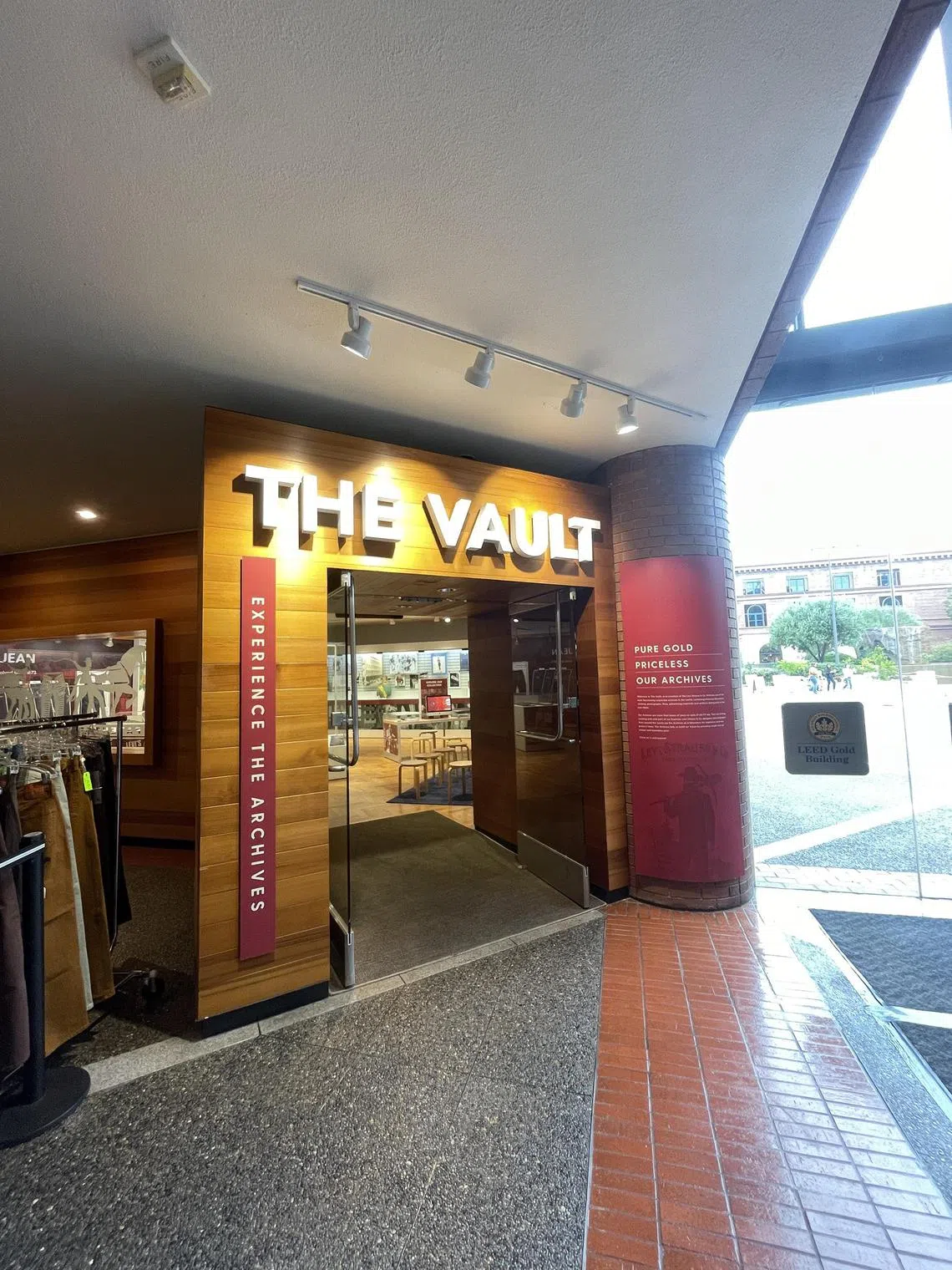
The Vault is a display collection curated by the Levi’s archivist team to tell the story of important moments throughout the company’s 170-year history and the varied iterations of jeans.
ST PHOTO: CHARMAINE LIM
To further its brand reach, particularly with younger consumers, the company works with celebrities such as American YouTuber Emma Chamberlain, rapper Jaden Smith and model Hailey Bieber.
Their newest international collaboration is with K-pop girl group NewJeans, who have worn Levi’s denim shorts in recent performances.
President Michelle Gass, who is set to take over as CEO from Mr Bergh, says: “Someone suggested marrying Levi’s and K-pop, and NewJeans were just gaining popularity then. We knew they would be great representatives of the brand, and their name is a happy coincidence.”
Mr Bergh, who lived in Singapore from 1999 to 2005 with his wife and children, adds that having a teenage daughter helps keep him young and in touch with the “lost generation”. He often listens to her ideas about what the company could explore.
“I’m a big Swiftie,” he says proudly, having attended American singer-songwriter Taylor Swift’s Eras Tour concert at the Levi’s Stadium on both nights in July. “My daughter is all over me every time Taylor shows up in denim, like, ‘Dad, why isn’t she wearing Levi’s?’”
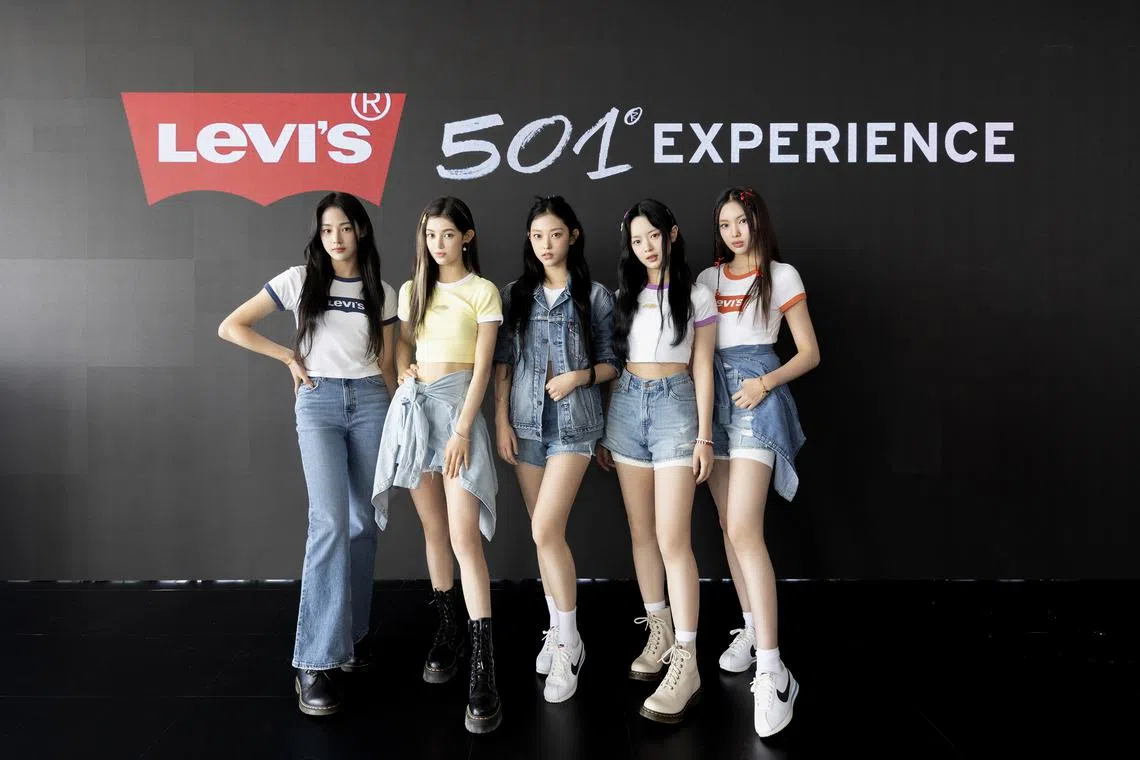
This year, Levi’s announced K-pop girl group NewJeans as its newest global ambassadors.
PHOTO: LEVI’S
Meanwhile, Ms Gass believes her work is cut out for her. As the 55-year-old prepares to take over the reins, she continues to push for market expansion in Asia, where Levi’s has seen significant growth.
She also champions more clothing options for women.
“I wear Levi’s head to toe daily, and I’ve always worn a lot of skirts and dresses. I walked around stores wondering where they were and later found them in our global line. We can stand for denim skirts, and we should have the best in the world,” she says.
Levi’s, she adds, will continue to push the boundaries of innovation within fashion.
Ms Gass says: “The next step is to take care of customers and unleash their creativity to let them experiment.”
The Levi’s Vault was established in 1989 and is located at the Levi’s Plaza, which opened in 1982, in San Francisco’s Battery Street. It displays a small collection of some of the earliest Levi’s jeans that have been found, as well as a timeline of the company’s history and a fun archival test on its walls.
The Vault was open to the public until the Covid-19 pandemic in 2020, and has since remained closed.
The Straits Times explores some of the interesting stories surrounding the treasure trove of Levi’s memorabilia.
9Rivet
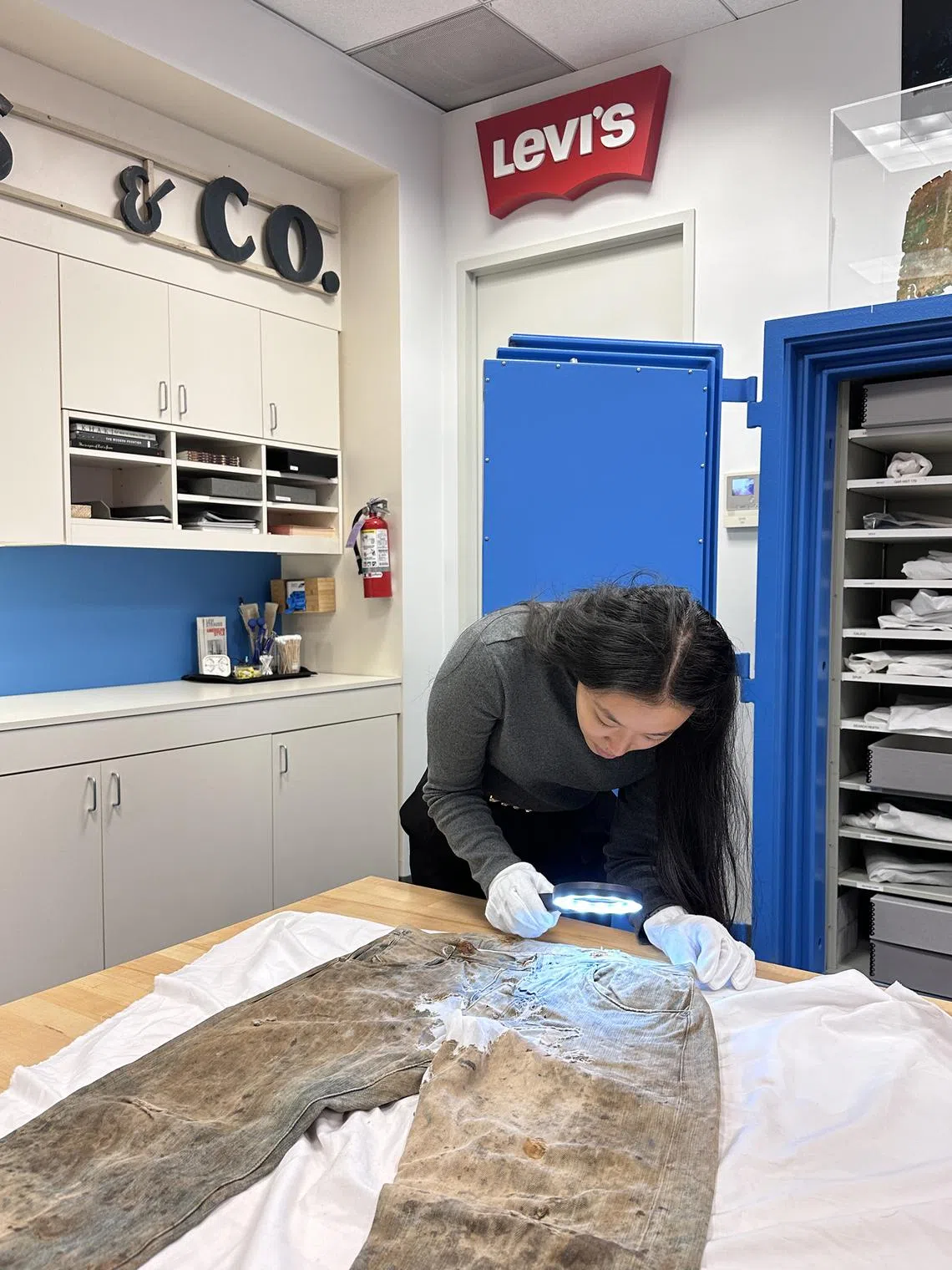
The oldest pair of Levi’s jeans found dates back to 1873 or 1874 and were found in a mine that had been shut down for decades.
ST PHOTO: CHARMAINE LIM
During a search to see if any of the jeans in The Vault were older than initially thought, Levi’s historians visited the Smithsonian museum as part of their research.
There, they discovered that the oldest pair of jeans in the Levi’s collection dated back to 1873 or 1874, more than 15 years older than a pair named Barnyard, previously thought to be the oldest in the collection.
Named 9Rivet, it was found in a mine that had been shut and likely belonged to a young man. It also has a gusset, a triangular piece of fabric inserted into the seam to reduce fabric stress or expand the clothing item, which was removed from 501 designs in later years.
The Lady Levi’s
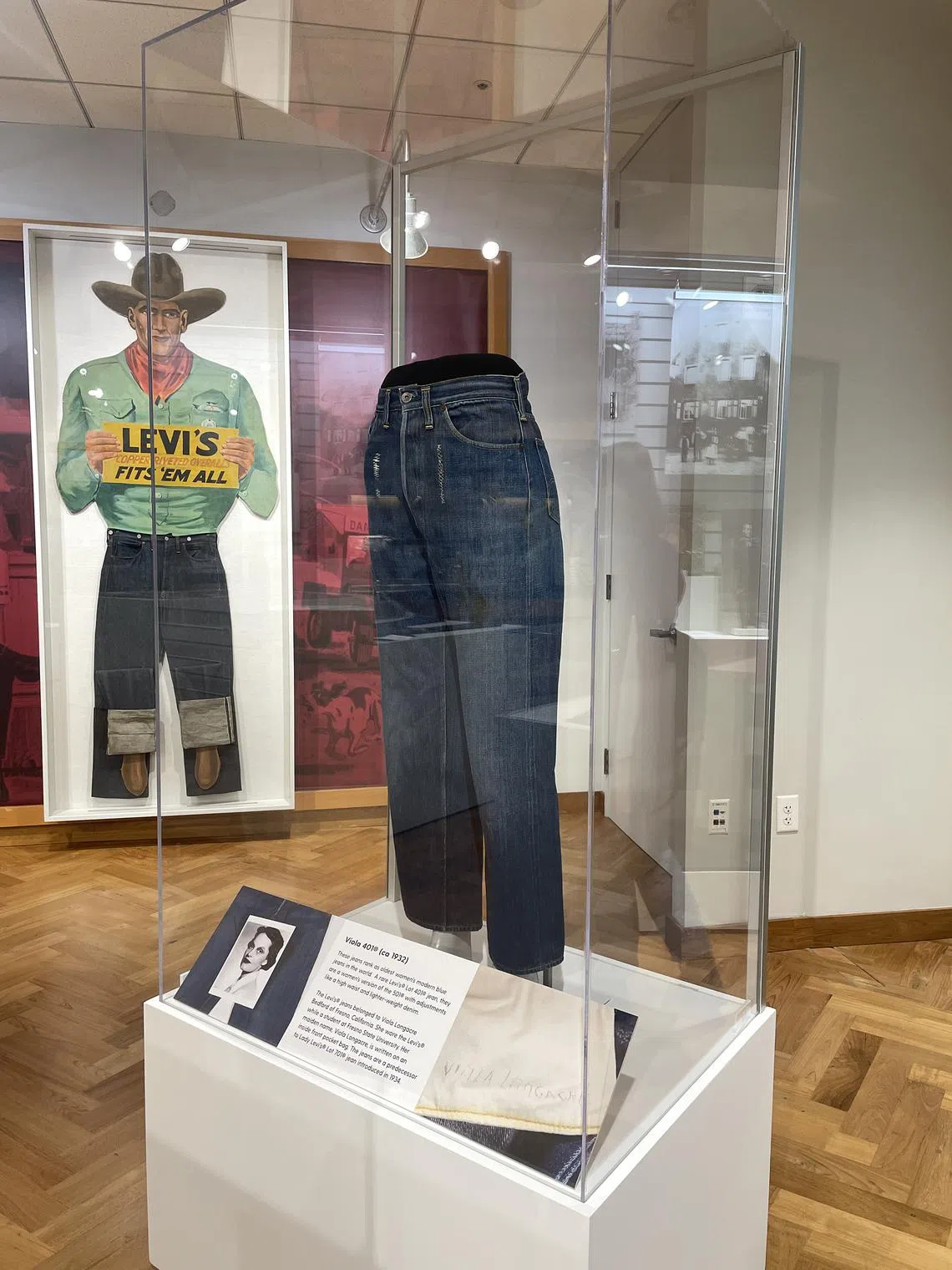
The oldest pair of women’s Levi’s jeans in The Archives once belonged to a woman named Viola Longacre.
ST PHOTO: CHARMAINE LIM
Currently the oldest pair of women’s blue jeans (they are believed to date back to the 1930s, when it was uncommon for women to wear one), the Viola was named after the young woman who owned them, Ms Viola Longacre.
A student at Fresno State University in the 1930s, she attended classes in the Sierra Nevada mountains, where it was cooler and more suited for wearing jeans. She eventually became an English teacher and lived to be about 101 years old. The jeans were found in her wardrobe after she died in 2014 and acquired by Levi’s during an auction in 2017.
A women’s version of the 501s, its style included a higher waist and lighter denim, which became known as the Lady Levi’s 701, introduced in 1934.
Hardy 501s
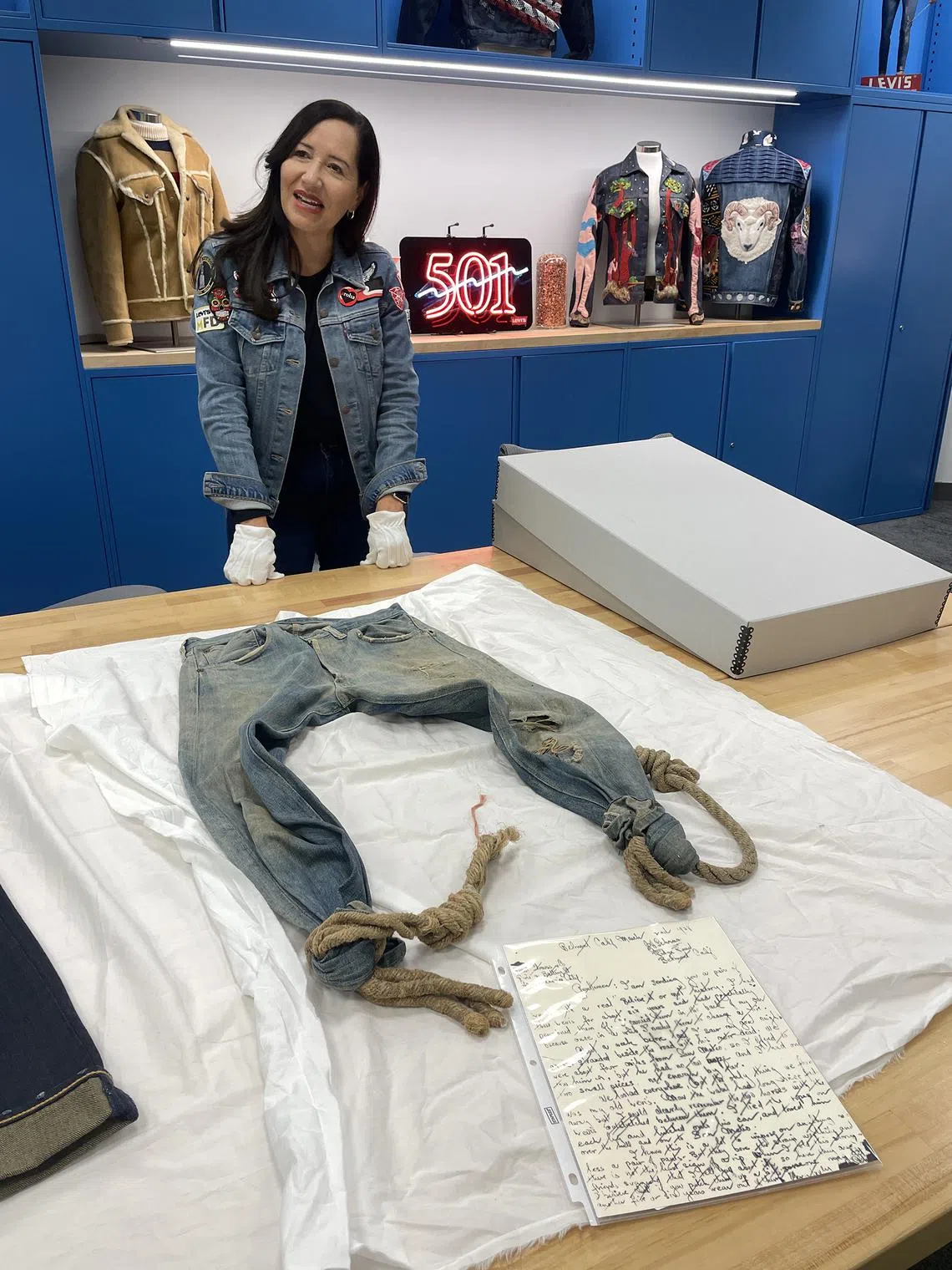
A pair of donated Levi’s jeans were once used to tow a car for more than 6km.
ST PHOTO: CHARMAINE LIM
In a letter from 1938, Mr Elliot Schram in Burlingame, California, tells of the durability of his jeans. He spotted a neighbour whose car broke down on the side of the road.
The only things in Mr Schram’s car were his 501s and some rope. Reminded of the famous horse pull test that was meant to prove the strength of the material, he used his jeans to tie the cars together and tow the dead vehicle for more than 6km.
The jeans show little evidence of wear despite having pulled a car for such a distance, and the story was recreated in a 1989 commercial.
Getting toasty
In early versions of the 501s, a rivet was placed in the groin area of the jeans, below the button fly. It was intended to help maintain structural support in the event of the pants being pulled. However, Levi’s realised over time that there was little need for the rivet.
Former chief executive Walter Haas also had an uncomfortable experience with the rivet. He was camping with friends and sitting around a fire, when the metal heated up too much and caused him discomfort.
The rivet was removed in 1941, during World War II, when metal needed to be saved for bullets.
The Woodstock jeans
In the late 1960s, denim could be seen everywhere at music festivals such as Woodstock. A young man named Greg was photographed wearing jeans that had been painted with various designs, including a yellow owl, his favourite animal.
The crowd at Woodstock was so immense that Greg and his friend Dan left their car for three days and walked to the festival. On the second day, they made it to the front of the stage, where Greg and his jeans were photographed.
On the side of the jeans was a bandana, to which a canteen of water was tied.


